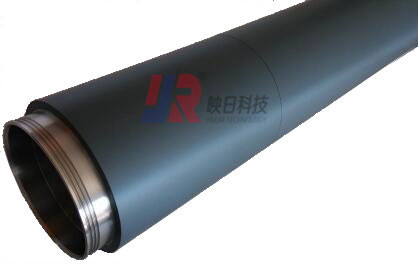Main methods of ITO target forming
Main methods of ITO target forming
At present, the main forming methods of ITO target mainly include:
1. Hot isostatic pressing method is to put the powder or pre pressed blank into the package, then vacuum the package, weld and seal it, and put it into the high-pressure container to make the powder sinter under high temperature and equal square pressure. Molding and sintering are carried out at the same time. In the development of ITO targets, it is difficult to obtain high-density and large-size materials by early hot isostatic pressing technology. With the emergence of atmospheric pressure sintering method, the target prepared by hot isostatic pressing method has the disadvantages of small size, low density, high oxygen loss rate, expensive equipment and high cost, which makes the hot isostatic pressing method no longer have competitive advantages in the preparation of ITO ceramic targets. The follow-up research and industrialization are gradually diluted by the industry, but it is still more suitable for ceramic targets requiring hypoxia.

2. Cold isostatic pressing method is to put the preformed blank into the rubber sheath and immerse it in the high-pressure liquid to bear the isotropic pressure to strengthen the density of the blank. Cold isostatic pressing only obtains the green billet with the highest density as possible, which makes the Sintering Densification of the green billet easier. Because cold isostatic pressing does not have the sintering capacity of hot isostatic pressing, an independent sintering process is needed to burn the green billet. Cold isostatic pressing can suppress large-size targets, which is the preferred forming method for most enterprises at present. The molding research at home and abroad shows that the cold isostatic pressing method can produce high-quality green blanks that meet the needs of ceramic targets. However, due to the limitation of chamber size, the equipment investment will be very expensive, and there will be deformation problems when the blank is thin and large. At the same time, when pressing different sizes of blank, it is necessary to prepare different specifications of preloading die, and the die cost is high.
3. Spraying method is to use high-pressure gas (N2, H2, mixed gas or air) to carry powder particles through the scaling tube to generate supersonic two-phase flow, impact the matrix in a complete solid state, and deposit on the surface of the binding back plate through large plastic flow deformation to form a coating. The coating is thickened layer by layer to obtain ceramic target. Plasma spraying, arc spraying, supersonic flame spraying and cold spraying are derived from the basic spraying method. Using niobium oxide powder and a small amount of metal Nb, the industrial preparation of rotating niobium oxide ceramic target was realized by plasma spraying. In recent years, the spray molding process has made a great breakthrough in the molding of high-end ITO, azo and igzo targets. Large target manufacturers have successfully prepared high-performance targets.
4. Wet forming is to prepare oxide powder into slurry, and then realize the blank with specific shape by self solidification, water absorption or pressure filtration, and obtain high-density blank after drying. Wet forming can not only realize the function of cold isostatic pressing, but also make up for the deficiency of cold isostatic pressing. The wet forming of ceramic target includes grouting forming, colloidal forming, direct solidification forming and so on.
Spraying method is a widely used technology at present. Its prepared products have high quality and good stability. In addition to the above molding methods, people have also studied impact molding and explosion molding. At present, these new molding methods are still in the research stage, and there are still a lot of research work to be further refined in order to realize industrialization.
